#epidemics
Text




[SOURCE]
Maternity kits, medical threads and scissors, water testing kits, anesthetics, mobile desalination units, etc do you see the pattern? Israel is not only starving the people of Gaza but it also wants to ensure the spread of disease through contaminated water and surgical tools, as well as ensuring injured Palestinians suffer through horrendous pain.
It's beyond sickening.
#yemen#jerusalem#tel aviv#current events#palestine#free palestine#gaza#free gaza#news on gaza#palestine news#news update#war news#war on gaza#famine#epidemics#gaza genocide#genocide
29K notes
·
View notes
Text
@hungarianmudkip69 recently asked @vaspider about the spread of HIV. The excellent discussion there focused largely on qualitative aspects, notably what was going on socially in the 1970s and 80s, HIV's subtlety and long incubation periods, and exponential growth (along with a great refutation of accidental needle sticks as a dominant vector).
I've got a math and physics background - I have some extremely relevant intuition, but I still prefer being able to find real-world numbers to confirm that I haven't misapplied it. I encourage checking out all the links in this post; there's a lot of great information!
We can't literally go back in time and test everyone for HIV, but it is possible to model and estimate, e.g. this 2021 report from the CDC (US-only).
The second graph of figure #2 is very close to what we discussed:

(MMSC is male-to-male sexual contact and IDU is injection drug use; see the article for other details.)
Again, these are estimates, so we can't take the exact numbers as fact, but let's look at the big picture. HIV likely first arrived in the US around 1970; it first gained public attention in 1981, when the CDC reported cases of what we now call AIDS. At that point, the estimate is an order of magnitude of tens of thousands of HIV infections.
The original asker was interested in the behavior of a "patient zero" (see also "Debunking the Myth of Patient Zero", an excellent video linked in that thread). These numbers help us see how little effect one hypothetical person's behavior could have had on the end result. As long as the virus was transmitted at all, it was going to reach the highest-risk populations eventually, and spread once there, whether it took one hop or ten. It was also essentially impossible to notice the pattern and infer the existence of HIV/AIDS in the US until multiple people in the same community developed AIDS and contracted unusual infections - which most likely means that it's reached that high-risk population, and ten years have passed.
Tens of thousands of infections is simply the result of exponential growth during those ten years; stopping it from becoming an epidemic would've required everyone's behavior to have changed. Different behavior, different transmission, different number of hops early on would more likely have changed how long it took to spread widely enough to become noticeable, not whether it did. (An unfortunately familiar concept, in the year 2023.)
The authors also mention that "trend data comparing subpopulations is likely to be robust for each period examined", so let's look back at those individual lines. Injection drug use (IDU) actually was a fairly significant means of transmission by the 1980s, and by the mid-80s, the spread among gay/bi men (MMSC) was beginning to decline. At the end of the decade, IDU may even have passed MMSC. Simultaneously, transmission was still rising among straight people. It shouldn't be too surprising that straight sex became significant; there are rather a lot of straight people!
The CDC also has us covered for a more current picture, as of 2017-2021 in the US:

This does vary greatly by country. Notably, as of 2022 in England, 49% of new diagnoses were among heterosexuals, compared to 45% among gay/bi men. (Do keep in mind that there are far more straight people, so still, a far higher fraction of gay/bi men were diagnosed.)
I personally find that I get the best understanding when I'm able to combine some direct evidence/data with an understanding of the history and social forces; hopefully this piece helps at least one person out in that way!
[Finally, as a footnote: trans women also exist (hi I'm one) and have historically been at high risk. I am unsure to what extent trans women are omitted versus misgendered in the above data. I wanted to focus on historical estimates over time here, and unfortunately wasn't able to find that for trans women, but this review article links to and summarizes some data from two meta-analyses.]
120 notes
·
View notes
Text

A man with cholera buried prematurely. Photograph after painting by A. J. Wiertz.
Wiertz, Anton Joseph, 1806-1865
Wellcome Collection
#biology#history#own post#curiosity#anatomy#medical#medicine#art#human anatomy#art history#cholera#macabre#macabre art#death#burial#coffin#epidemics#anatomical illustration
138 notes
·
View notes
Text
Varney the Vampire: Chapter 16
Chapter 15: Our nephew can't marry some German vampyre!
PREVIOUSLY ON: We had a dance break to introduce two new comic-relief characters. But before that, Flora's sorta-fiancé that she met on the Continent and hadn't seen since showed up, and Flora's oldest brother started trying to warn him (Charles Holland) that since Flora has been bitten by a vampyre, he (Charles Holland) should not marry her. Flora said he should not marry her. The stalwart and faithful Charles Holland is not having any of that shit.
CHAPTER XVI.
THE MEETING OF THE LOVERS IN THE GARDEN. -- AN AFFECTING SCENE. -- THE SUDDEN APPEARANCE OF SIR FRANCIS VARNEY.
Or is he?
Our readers will recollect that Flora Bannerworth had made an appointment with Charles Holland in the garden of the hall. [...] The thought that he should be much urged by Flora to give up all thoughts of making her his, was a most bitter one to him, who loved her with so much truth and constancy, and that she would say all she could to induce such a resolution in his mind he felt certain. But to him the idea of now abandoning her presented itself in the worst of aspects.
Okay but. We just had like a chapter and a half of you swearing up and down that you'd never—
“Dare I be so base as actually or virtually to pad out out the word count say to her, 'Flora, when your beauty was undimmed by sorrow -- when all around you seemed life and joy, I loved you selfishly for the increased happiness which you might bestow upon me; but now the hand of misfortune presses heavily upon you -- you are not what you were, and I desert you?' Never -- never -- never!"
Atta boy.
James Malcolm Rymer decides to throw in that Charles Holland (if you are just joining us, I feel like you always have to say his full name. Rymer often does. It just feels right) "felt more acutely than he reasoned." I'm not sure if this is meant to be snarky or not; at least Rymer follows this up by lauding his "nobility of soul."
As for Flora, Heaven only knows if at that precise time her intellect had completely stood the test of the trying events which had nearly overwhelmed it.
On one hand, I get it: Flora's had a tough week. On the other hand, shut the fuck up, Rymer.
The two grand feelings that seemed to possess her mind were fear of the renewed visits of the vampyre, and an earnest desire to release Charles Holland from his repeated vows of constancy towards her.
She's still holding up better than her brother Henry, who was constantly wailing about how the horror of having a sister bitten by a vampyre ancestor is driving him maaaaad. Flora's intellect seems to be working perfectly fine, however, as she weighs her love for Charles Holland vs. the depth of his suffering: "To link him to her fate, would be to make him to a real extent a sharer in it."
In the sense that he might have to watch her be staked, and grieve her death?
In the sense that she might become a vampyre and come after her nearest and dearest (i.e., him) first, as vampires were folklorically said to do?
In the sense that she might bear… tainted children?!
[And] the more she [had] heard fall from his lips in the way of generous feelings of continued attachment to her, the more severely did she feel that he would suffer most acutely if united to her.
And she was right.
But they were going to have a romantic rendezvous to talk this out, right? Charles is now waiting for her in Bannerworth Hall's [overdescribed] flower garden, secluded from the main building,
and in its centre was a summer-house, which at the usual season of the year was covered with all kinds of creeping plants of exquisite perfumes, and rare beauty. All around, too, bloomed the fairest and sweetest of flowers, which a rich soil and a sheltered situation could produce.
Honestly, I had a long discussion/comparison of Flora to Stoker's Lucy Westenra here, and I feel like it needs to go take a nap and come back some other time as a separate post. But suffice it to say, I think wealth is an important factor in how pleasantly "sheltered" these two characters are: not to take anything away from their sweetness and purity of heart (this is where I start going on about how misunderstood Lucy is), but they can afford to be sweet and lovely and naive, if you see what I'm saying (and this is more apparent in Dracula, in comparison to Mina, her level head, and her professional skills). As much as we need to point out that Rymer is romanticizing whiteness (figuratively and literally), I think we also have to consider that he's romanticizing wealth—class—by going on and on about a family estate with a large, "sheltered," professionally-tended garden.
Rymer continues this metaphor by saying that the "more estimable Flora floral culture" has declined,
for the decayed fortunes of the family had prevented them from keeping the necessary servants, to place the Hall and its grounds in a state of neatness, such as it had once been the pride of the inhabitants of the place to see them. It was then in this flower-garden that Charles and Flora used to meet.
I SAID, THAT SHE MET ON THE CONTINENT AND HASN'T SEEN SINCE
Nonetheless, Charles Holland has arrived early to this garden of lies. He is ready to romance. "Aníron" plays softly in the distance.
A light sound, as of some fairy footstep among the flowers, came upon his ears, and turning instantly to the direction from whence the sound proceeded, he saw what his heart had previously assured him of, namely that it was his Flora that was coming.
Alas, the flower that to his mind was fairer than them all, was blighted, and in the wan cheek of her whom he loved, he sighed to see the lily usurping the place of the radiant rose.
Yes, it was she; but, ah, how pale, how wan -- how languid and full of the evidences of much mental suffering was she. Where now was the elasticity of that youthful step? Where now was that lustrous beaming beauty of mirthfulness, which was wont to dawn in those eyes?
Alas, all was changed. The exquisite beauty of form was there, but the light of joy which had lent its most transcendent charms to that heavenly face, was gone.
There's a reason Rymer goes to such lengths to (also; additionally; is there anything he doesn't) romanticize Flora's ill health:
While tuberculosis has been traced back thousands of years (and is still considered a pandemic), it wasn't named as such until 1834. And because it wasn't identified as a single disease until the 1820s, it was often thought to be vampirism: blood would appear on a patient's lips, people around them would also sicken and die, and so on. The colloquial name for tuberculosis (as you probably know) was consumption, even: being consumed by something unseen, unto death.
But as the Dead Maidens article up there points out, tuberculosis was glamorized among the upper class (not the only class who came down with it, mind you). Tuberculosis, as diseases go, had more dignity than dysentery and cholera, and happened to exaggerate what people already considered to be attractive:
[Early] symptoms seemed to heighten already established beauty standards of the time, and a wealthy young woman could waste away for years before the horrible end came. In the meantime, poor circulation turned fair complexions ghastly white. The blue veins and translucent fragile skin were treated as a crystalline delicacy. The constant low fever kept the cheeks and lips flushed with a rosy hue and the eyes wide and watery. Patients would waste away growing ethereally thin.
Chicken or egg: Did tuberculosis underline existing beauty ideals, or was it a matter of people glamorizing what they saw happening around them anyway? Yes, I think, is the answer to that.
Meanwhile, the contagion ramped up through the 1700s and 1800s, and when you combine this with the increase in both literacy and affordable publishing during the Industrial Revolution, you get the first era, the pre-Dracula era, of Western vampire literature, starting with Lenore (1773) and The Bride of Corinth (1797). (Which were published after the 1750s Austrian Vampire Problem we talked about last time.) Meanwhile, in 2023, I wrote a gigantic digression about heroes coddling heroines as validation for readers who feel unvalidated and beauty as virtue that I am straight-up going to have to cut out and maybe post separately, because this recap is already way too long.
ANYWAY, MY DEAR FLORA, said Charles Holland,
"remember that there are warm hearts that love you. Remember that neither time nor circumstance can change such endearing affection as mine. [...] Wherefore, Flora, would you still the voice of pure affection? I love you surely, as few have ever loved."
I love this shit. I absolutely love stories where Our Hero (Gender Neutral) tells me the Reader Proxy, for several paragraphs, that they love her/him/them heart and mind and body and soul for all time unto the heat death of the universe. LOVE. THAT. SHIT.
No, cries Flora! We mustn't! (But we MUST!) I will not quote all of this scene to you, but suffice it to say that they argue over how Charles Holland's entire face would shout his love if his tongue didn't happen to show up at the office that day. He is not just words! He is action! No, you mustn't! BUT I MUST! Love it.
Notice, though, how you must not is not I do not want you to. A lot of older romance writing either doesn't care about consent (I know a number of current romance writers who do, very much much so), or it stays sort of muddled and unclear as to how much a heroine is really into it. This may be either in the spirit of dubcon or honestly, because characters in an era when they weren't supposed to touch (Charles and Flora are actually pretty handsy. Waist action happens) are kind of pushing the envelope by talking too much about it at all. Flora may really be saying, "Charles Holland, we mustn't speak of love at such agonizing length in a wholesome publication!" ("I mean, is a pamphlet that wholesome, it's not a real newspaper or anything...") "Well, it has to be reasonably decent! I have to at least blush and avert my maidenly eyes every couple of sentences! We should probably talk about God watching us at some point!" ("Like... watching us...?") ("NO!!!")
"I must not now hear this. Great God of Heaven give me strength to carry out the purpose of my soul. […] Charles, I know I cannot reason with you. I know I have not power of language, aptitude of illustration, nor depth of thought to hold a mental contention with you."
POINTS:
Flora needing strength to carry out her purpose—refusing Charles Holland—underlines that this is something she does not, in fact, want to do. While Charles Holland's persistence might be functionally indistinguishable from Dude Who Won't Take No For An Answer, here in a fictional context, we're given cues that Charles understands correctly that Flora is only trying to break up with him For His Own Good.
Compared to these frequent comments on Flora's allegedly weak intellect, can you see how "She has man’s brain [and] a woman's heart" is actually a fairly decent compliment to Mina Harker on Stoker's part?
Shut the fuck up, Rymer
Why not speak of love, demands Charles Holland?? We spoke of love 24/7 on the Continent! Whyfore not thereunto??
"I am changed, Charles. Fearfully changed. The curse of God has fallen upon me, I know not why. I know not that in word or in thought I have done evil, except perchance unwittingly, and yet -- the vampyre."
Charles Holland insists that there's got to be a rational explanation, because he is not actually the one who shot a vampyre in the face, nor has he been anyone's repast. To which Flora basically says, "WELL FIND ONE THEN." Saying which, she flings herself onto a seat in the summer-house (I'm imagining a gazebo here), and "covering her beautiful face with her hands, [sobs] compulsively." To hundreds of words of Charles Holland's dismay, Flora goes on to say that he should go find someone else, and "justice, religion, mercy -- every human attribute which bears the name of virtue" calls upon her to dump him. Which, again: if Flora really wanted to break up with him, she wouldn't be talking about all the external factors making her do it. There are several great breakup scenes in English-language literature of the 1800s from Pride and Prejudice onward, and this, on many levels, is not one of them. Charles Holland (and a reader used to this kind of writing) would pick up on that subtext. (Truly, I cannot emphasize enough that fiction is not real life. Don't presume to know what other people "really" mean IRL.) Thus, Charles Holland counters with the wonderful marshmallow romance goo:
"Well I know that gentle maiden modesty [that we need to have in this Reasonably Decent Publication] would seal your lips to the soft confession that you love me. I could not hope the joy of hearing you utter these words. The tender devoted lover is content to see the truthful passion in the speaking eyes of beauty. Content is he to translate it from a thousand acts, which, to eyes that look not so acutely as a lover's, bear no signification; but when you tell me to seek happiness with another, well may the anxious question burst from my throbbing heart of, 'Did you ever love me, Flora?'"
Her senses hung entranced upon his words. Oh, what a witchery is in the tongue of love. Some even of the former colour of her cheek returned as, forgetting all for the moment but that she was listening to the voice of him, the thoughts of whom had made up the day dream of her happiness, she gazed upon his face.
His voice ceased. To her it seemed as if some music had suddenly left off in its most exquisite passage. She clung to his arm -- she looked imploringly up to him. Her head sunk upon his breast as she cried,
"Charles, Charles, I did love you. I do love you now."
"Then let sorrow and misfortune shake their grisly locks in vain," he cried. "Heart to heart -- hand to hand with me, defy them."
Their... gory hair? ANYWAY WE DEFY THE FATES, BELOVED! OUR LOVE CONQUERS ALL! WE CARE-BEAR STARE AT DESTINY, FLORA! Good hustle, that's what I wanna hear.
He lifted up his arms towards Heaven as he spoke, and at the moment came such a rattling peal of thunder, that the very earth seemed to shake upon its axis. [Flora screams and there is extensive discussion of how scary it is.] Another peal, of almost equal intensity to the other, shook the firmament. Flora trembled.
Gonna be honest, I thought for a moment that Varney was falling off a wall again. Flora declares that this is the Voice of Heaven insisting that they break up forever, but Charles Holland insists that
"The sunshine of joy will shine on you again."
There was a small break in the clouds, like a window looking into Heaven. From it streamed one beam of sunlight, so bright, so dazzling, and so beautiful, that it was a sight of wonder to look upon. It fell upon the face of Flora; it warmed her cheek; it lent lustre to her pale lips and tearful eyes; it illuminated that little summer-house as if it had been the shrine of some saint.
Here we go again, let's note, with the insistence that Flora is intrinsically pure. How you like them omens? Now this, this is a promise of God, and yea, a dove with an olive branch probably flies through a rainbow somewhere over the house. Back in the day, I took a graduate class on (American, mid-1800s) sentimental literature, which my professor characterized as "weepin' and prayin'." A certain kind of Protestant piety runs deep through these texts—not just the American ones—and appears as a default mindset in a lot of 19th-century literature:
Most of the high profile female writers of this period were committed Christians. The Broad Church Brontës, the Unitarian Mrs Gaskell and the systematically unconventional Emily Dickinson made much use of their faith in their work. So did George Eliot, supersaturated with a religion in which she no longer believed, yet an accomplished theologian. The male writers were often committed believers too, despite the apparently worldly outlook of many, including apparently cynical Thackeray and robustly conventional Trollope.
Throughout Victoria's reign, religious controversy simmers, not only among journalists but poets and novelists too. These Christian turf wars are sometimes edited out of readings of Victorian texts because they might not feel relevant to modern studies. Marianne Thormählen in The Brontës and Religion sees it differently: ‘The Christian life is a foreign country to most people today and I believe it serves some purpose to be reminded that to the Brontës it was home.’
The flip side of this is that vampire fiction tends to bring in a Catholic Christian vibe: no matter what denomination anyone was before the fangs came out, let's throw holy water and a wafer at the problem. But in the meantime!
She allowed him to clasp her to his heart. It was beating for her, and for her only. [...] "Charles, we will live, love, and die together."
In "a wrapt stillness" and "a trance of joy," they stare at each other and smile and nearly cry for a good long while, which is very sweet. BUT THEN!
A shriek burst from Flora's lips -- as shriek so wild and shrill that it awakened echoes far and near. Charles staggered back a step, as if shot, and then in such agonised accents as he was long indeed in banishing the remembrance of, she cried, --
"The vampyre! the vampyre!"
Yeah, that's the chapter. You might recall that Sir Francis the Vampyre expressed hopes of courting Flora, so this is gonna get interesting.
Varney the Vampire masterpost
36 notes
·
View notes
Text
2024 Reading Log, pt 1
It begins again!

001. The Seed Detective by Adam Alexander. This was the book I was actually looking for when I stumbled upon and also picked up that awful Curious History of Vegetables. This book also has information about the history and folklore involving various vegetables, but is written by someone with a basic respect for science. Alexander is involved with seed saving networks, and a fair amount of the book is him discussing how he got a type of seed he very much likes, or untangling the history of a heritage variation. It’s a quick read and charmingly written.
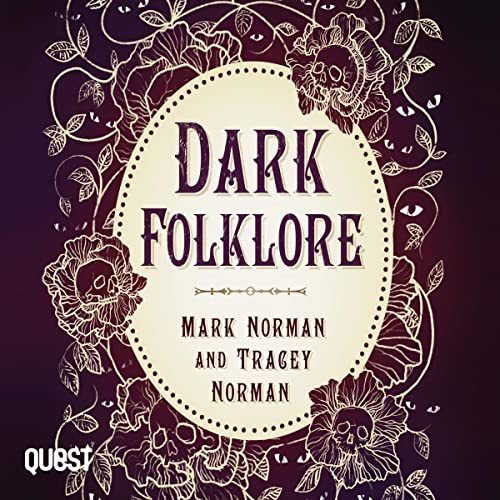
002. Dark Folklore by Mark Norman and Tracy Norman. The book consists of five chapters, each covering a bit of (mostly British) folklore, and they’re basically organized in order of most to least insightful. There’s a good analysis of the Old Hag and other lore surrounding sleep paralysis, a fun miscellany of weird or magical lore related to British churches and clergy, and a look at the traits that folkloric ghosts have that reports of individual hauntings do not. And then there’s a pretty limp chapter about urban legends that’s mostly just Slenderman, and a final chapter on legend tripping and dark tourism that is basically “this is a thing that exists”. Rarely have I read a book so short that runs out of steam so quickly. It feels like this was finished to a deadline, and suffers for it.
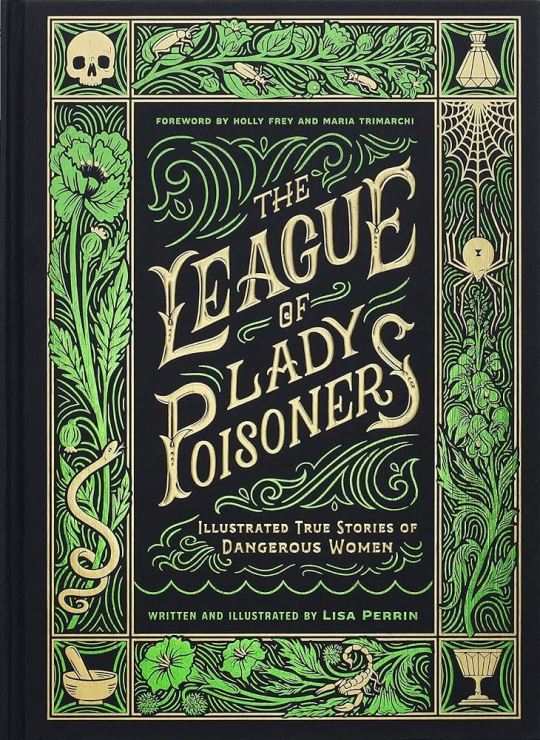
003. The League of Lady Poisoners, written and illustrated by Lisa Perrin. This book is gorgeous. Fully illustrated in gothic style, and with the pages in a pretty, shiny, arsenical green. As the title suggests, the book consists of biographical sketches of women who killed or assaulted with poison, although the book also goes out of its way to talk about the idea of poison as a “woman’s weapon” is a meme rather than a statistical reality. A number of the stories within I’ve heard before (which isn’t a surprise, considering how many books from the bibliography I’ve read), but some of them are new to me, and some quite shocking. Queen Ranavalona I of Madagascar, for example, who may have killed as many as 20% of her subjects through the use of trial by ordeal.
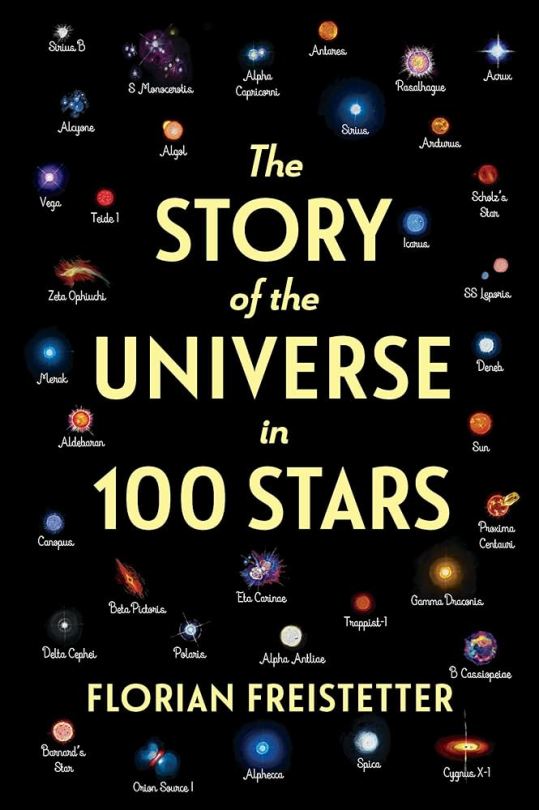
004. The Story of the Universe in 100 Stars by Florian Freistetter. This is a popular science book translated into English, this time from German. As I’ve said before, I’m a sucker for “History of the World in X Nouns” formats for nonfiction. The stars covered here are not all stars—they include black holes, planets that have been mistaken for stars, and even forgotten constellations. Freistetter does a good job of covering all sorts of different types of astronomical lore, and even discusses some fringe hypotheses (like cosmic radiation being the cause of global warming, which he makes sure to debunk extra hard). The biggest flaw with the book, I don’t know whether is an issue with the English translation or the original. The numbers are all wrong. Things like the Earth being 0.8 light years from the Sun (as opposed to 8 light minutes), or the mass of the black hole in the Milky Way being 4 times the Sun’s mass in one chapter and 4 million times in another. It’s a shame, because I really liked this book otherwise, and hope that it gets a paperback edition with some better proofreading.
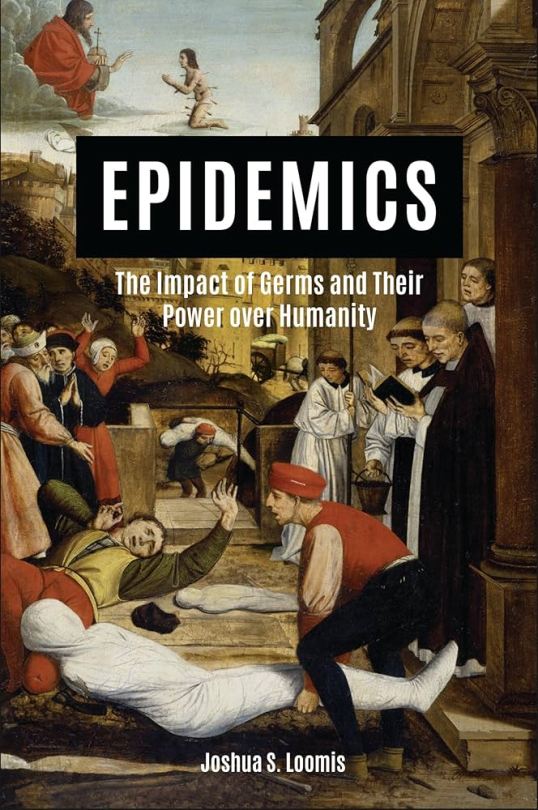
004a. Epidemics: The Impact of Germs and their Power over Humanity by Joshua S. Loomis. This book failed the vibe check for me. The title is a pretty good summary, although substitute “humanity” for “white people”. The book is almost entirely concerned with European and post-colonial American history and how it was impacted by disease. It therefore feels quite blinkered. The discussion of malaria, for example, focuses a lot more on how European powers were able to come in and partition Africa once quinine became available than the actual suffering of the African people (although it at least gets that the impoverished state of Africa today is due to a history of being looted). There are a number of times where it looks like it’s embracing a “Christianity versus Islam clash of civilizations” narrative, and the introduction blithely states that “most people haven’t lived through an epidemic” (obviously, this was written pre-COVID) as if the developing world or the AIDS pandemic didn’t exist. When I got to the book promoting conspiracy theories that Russia had created genetically engineered super smallpox, I gave up on it.
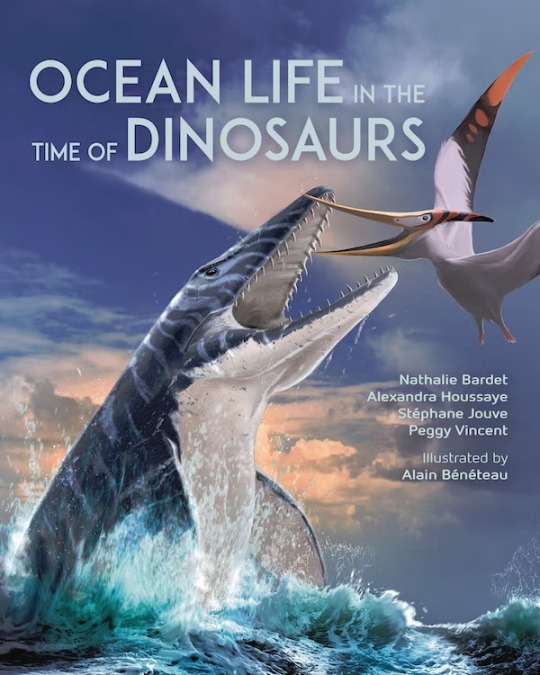
005. Ocean Life in the Time of Dinosaurs by Nathalie Bardet, Alexandra Houssaye, Stéphane Jouve and Peggy Vincent, illustrations by Alain Bénéteau. Another popular science book translated and made available in English, this one was originally published in French. The first half of the book is an overview of various marine reptile groups, mostly but not limited to the Mesozoic, and then the second half discusses particular fossil deposits that are rich in marine reptiles. There is definitely more European bent to the species illustrated and deposits discussed—the fauna of the Western Interior Seaway, for example, is barely mentioned. One of the most notable things about the book is the use of a single illustrator for almost all of the paleoart in the book, which gives it a very unified artistic vision. Personally, I liked Naish’s Ancient Sea Reptiles more (like Naish, I think in terms of phylogenetics, and having a single author, Ancient Sea Reptiles has a more strongly unified narrative voice), but both books are good.
#reading log#horticulture#botany#folklore#true crime#poison#epidemics#astronomy#paleontology#marine reptiles
9 notes
·
View notes
Text

January 9, 1924: How tubercular children were cared for: with all available inside space fitted up with desks, cots and classrooms, three ferry boats were put in operation as schools for the ever-increasing number of tubercular schoolchildren. The boats, which were under the supervision of the Board of Education, were also equipped with kitchens for giving the students lunch. Photo shows the children during the sleeping period of one hour, which was given every day.
Photo: Bettmann Archives/Getty Images/Fine Art America
#New York#NYC#vintage NY#1920s#tuberculosis#tubercular children#ferries#illness#schools#epidemics#retro New York#January 9#Jan. 9
66 notes
·
View notes
Text
https://x.com/CLG98264897/status/1702084655288095220?t=Vd6t7MmenQMNF3TXdMxfEw&s=09




#white lies#drugs#conspiracies#crack#opioids#color and race#white lies about america#epidemics#govenment sanctioned genocide of Blacks
15 notes
·
View notes
Text
Which Zombie Infection Type is scarier?
31 notes
·
View notes
Text
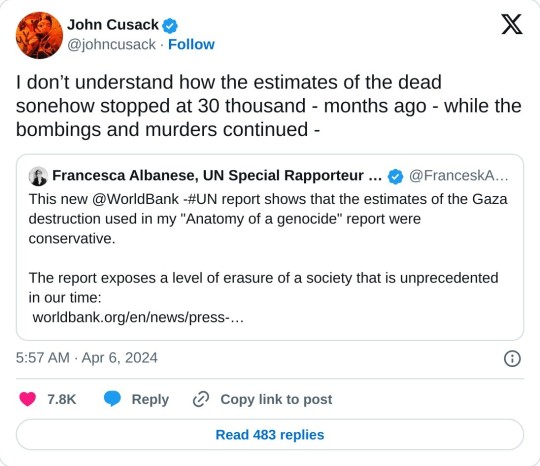
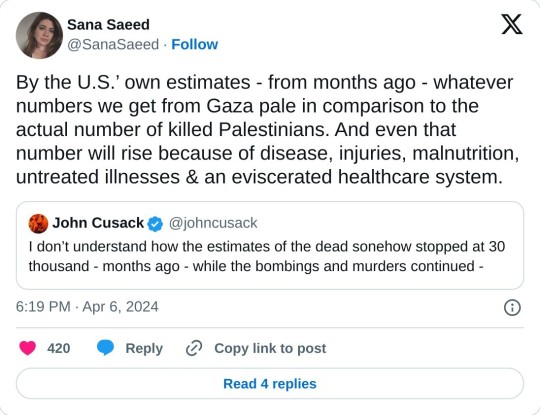

#yemen#jerusalem#tel aviv#current events#palestine#free palestine#gaza#free gaza#news on gaza#palestine news#news update#war news#war on gaza#gaza genocide#genocide#shoah mention#holocaust tw#famine#epidemics
2K notes
·
View notes
Text
😱⚡️😱
#the simpsons#predictions#truth exposed right in your face#mind blowing#wake up humanity#predictive programming#mk ultra#mind control#dirty politics#vaccines#health#crises#health care#diseases#epidemics#deadly#warning#crimes against humanity#these people are evil#speaktruth#fight for justice#standup#speak up#truth#please share#wwg1wga
6 notes
·
View notes
Text
The Neolithic period saw major advancements in technology, arts, agriculture and trade. But with these came malnutrition, starvation and the spread of epidemic diseases.
18 notes
·
View notes
Text
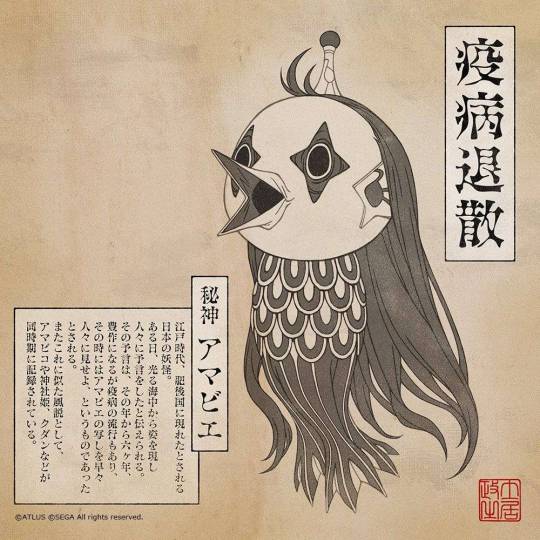
That time Doi drew an Amabie, a protector Yokai that appears during epidemics. Doi used this ilustration for the Covid pandemics, in 2021. Amabie was also used by Japan during the Covid Crisis in public services announcement. This Yokai was never featured in the game Doi was working with at the time, it being Shin Megami Tensei V. But his design of the creature is very well done, and i love this art.
16 notes
·
View notes
Text

#dopenation#smoking dope#say no to drugs#iv drugs#meth spun#fallen angel#addiction#sadbeautifultragic#sad poetry#epidemics#tragedy#tw depressing thoughts#truth#motivation
23 notes
·
View notes
Text
In the 1980s and 1990s, the AIDS epidemic brought both greater visibility and deeper stigma for gay, lesbian, and bisexual communities. This was as true at Princeton University as anywhere else.
3 notes
·
View notes
Photo
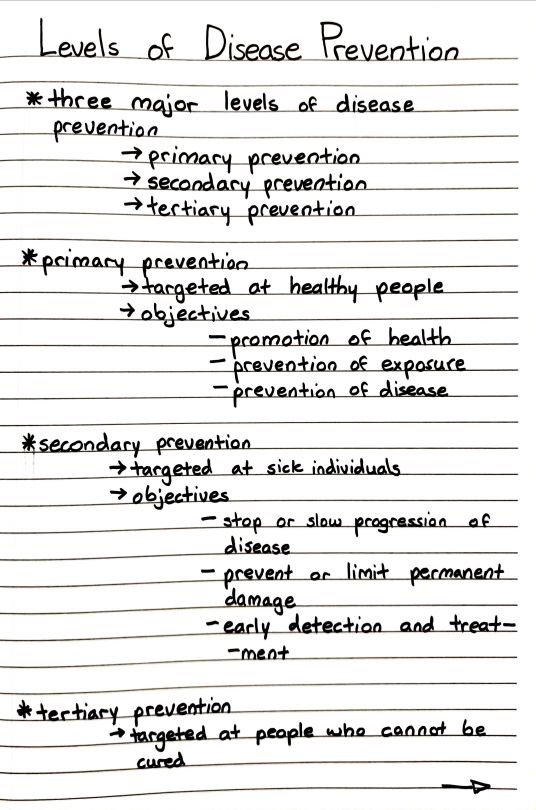

#studyblr#notes#medblr#medical notes#med notes#epidemiology#epidemiology notes#epidemics#epidemics notes#disease prevention#pathology#pathology notes#pathophysiology#tertiary prevention#secondary prevention#primary prevention#biology#biology notes#life science#science
9 notes
·
View notes
Text
your childhood reference about toys coming to life is Toy Story. mine is The Velveteen Rabbit. we are not the same
#know your history#the velveteen rabbit is a great short story btw and you should absolutely re/read it.#we are sliding right back into horrifying diseases regularly killing people as just a fact of life again aren't we 😞#epidemics#disease outbreaks#public health crisis#2022#thinking about covid and monkey pox. about the resurgence of measles and now polio in the u.s.#pestilence is still the fourth horseman of the apocalypse after all#well technically i think the fourth one is death- but you know what i mean. pestilence is still one of the four#the velveteen rabbit#the velveteen rabbit deals with scarlet fever is the point i was making
16 notes
·
View notes